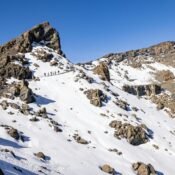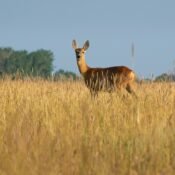
Why a Tanzania Safari Is Perfect for Nature Photographers
If you’re a nature photographer, there are places that you dream about—where the light is golden, the landscapes are wild, and the wildlife moves as if on cue. Tanzania is one of those places. Actually, scratch that—Tanzania is the place.
Whether you’re a professional with multiple camera bodies or an enthusiastic hobbyist snapping on your DSLR, a Tanzanian safari gives you front-row access to some of the most jaw-dropping natural scenes in the world. From the sprawling savannahs of the Serengeti to the misty craters of Ngorongoro, it’s a living, breathing photoshoot that never stops giving.
Here’s why Tanzania should be at the very top of your list as a nature photographer.
The Light Is Pure Magic
Photographers live and breathe light. In Tanzania, you’re gifted with soft, golden light in the early mornings and late afternoons—the kind of glow that makes every subject look like it was lit for a documentary. The golden hour lasts longer here, and when you catch an elephant or lion bathed in that amber glow, it feels almost unreal.
You’ll also love the dramatic contrast: bright blue skies, dusty orange plains, and deep green forests. Whether you’re shooting wide-angle landscapes or tight wildlife portraits, the light brings everything to life.
Wildlife That’s Always Ready for Its Close-Up
Tanzania is one of the best places on the planet to photograph wildlife. Seriously, the animals are everywhere, and they aren’t shy about making an appearance.
You’ve got:
- Lions lounging in the sun or climbing trees
- Massive herds of wildebeest on the move during the Great Migration
- Elephants playing near riverbanks
- Giraffes gracefully crossing open plains
- Leopards draped over branches, resting in the midday heat
- Flamingos painting lakes pink in places like Lake Natron
You don’t need to sit in a hideout for hours hoping to catch a glimpse. In Tanzania, wildlife often comes to you.
Variety That Keeps It Fresh
Tanzania isn’t just savannah. The country offers an incredible variety of ecosystems—each one offering different photographic opportunities.
- The Serengeti: Rolling plains and the Great Migration.
- Ngorongoro Crater: A prehistoric caldera with a dense concentration of animals.
- Tarangire National Park: Giant baobab trees and large elephant herds.
- Lake Manyara: Lush forests, flamingos, and tree-climbing lions.
- Mount Kilimanjaro: Epic sunrise shots, cloud forests, and snow-capped peaks.
You’ll never get bored because each region brings its own mood, animals, and lighting conditions.
The Great Migration – A Photographer’s Dream
If you time your visit right, you can witness the Great Migration—a movement of over 1.5 million wildebeest, accompanied by thousands of zebras and gazelles. It’s one of the most spectacular wildlife events on the planet.
Imagine capturing a dusty stampede across the plains or a dramatic river crossing where crocodiles lie in wait. The emotion, tension, and motion make for powerful storytelling through your lens.
The Chance to Capture Rare Moments
Tanzania offers so many unique photo opportunities that it often feels like you’re shooting behind the scenes of a BBC Earth documentary.
Want to capture a lion hunt? It happens here.
Looking for close-up shots of a baby elephant walking under its mother? Just wait a while.
How about Maasai warriors dancing or a dramatic thunderstorm rolling over the plains? Totally possible.
The sheer unpredictability is part of the magic. You never know what you’ll witness, but chances are, it’ll be something special.
Cultural Photography Opportunities
Tanzania’s human side is just as photogenic. The Maasai people, in particular, are an iconic part of East Africa. With their bright red shukas (robes), intricate beadwork, and proud traditions, they add a fascinating cultural dimension to your portfolio.
Be respectful and ask before photographing people, but you’ll find many are open and happy to share their stories—and their stunning visuals.
You can also visit bustling local markets, tribal villages, or capture everyday life in towns like Arusha and Moshi.
Landscapes That Speak for Themselves
If wildlife isn’t your only focus, Tanzania’s landscapes will steal your heart. Vast golden plains, volcanic mountains, tropical forests, crater lakes, and dramatic sunsets offer endless opportunities for landscape photographers.
Mount Kilimanjaro—Africa’s highest peak—can be captured from many angles. Whether it’s a silhouette at sunrise or a snow-dusted summit above the clouds, it’s a majestic addition to any portfolio.
Then there’s the Ngorongoro Crater: standing at the rim, camera in hand, looking out across the bowl-shaped wonderland—it’s the kind of place that makes even your iPhone shots look professional.
Accessibility and Safari Comfort
One of the underrated perks of a Tanzania safari is how accessible the wildlife and landscapes are. Many parks have excellent road networks, and experienced guides will help you get into position for the best shots.
Private safari vehicles can be arranged, allowing you to set your own pace. Want to sit for 40 minutes waiting for the perfect cheetah shot? Go for it. Need to leave early for that morning light? Your guide will have the thermos of coffee ready.
The vehicles are also modified for photographers—pop-up roofs, bean bag rests, and plenty of room to switch gear on the go.
Gear Considerations and Tips
If you’re bringing serious gear, here are some quick tips:
- A telephoto lens (200mm-600mm) is essential for wildlife
- A wide-angle lens is great for landscapes and lodge scenes
- Carry extra batteries and memory cards
- Bean bags work better than tripods in safari vehicles
- Keep your gear clean—dust is everywhere
- Don’t forget lens wipes and sensor cleaning kits
Also, have a backup camera or at least a high-quality smartphone for candid shots. Some of the best moments happen quickly.
Final Thoughts
Tanzania isn’t just a destination for nature lovers—it’s a living canvas for photographers. Every day brings a new scene, a new creature, a new challenge, and a new opportunity to tell a story with your lens.
Whether you’re tracking a pride of lions, waiting for a leopard to descend a tree, or watching the sky explode into color at sunset, Tanzania lets you capture raw nature at its most beautiful.
So pack your camera, bring your sense of adventure, and get ready to fall in love with one of the most photogenic places on Earth.




